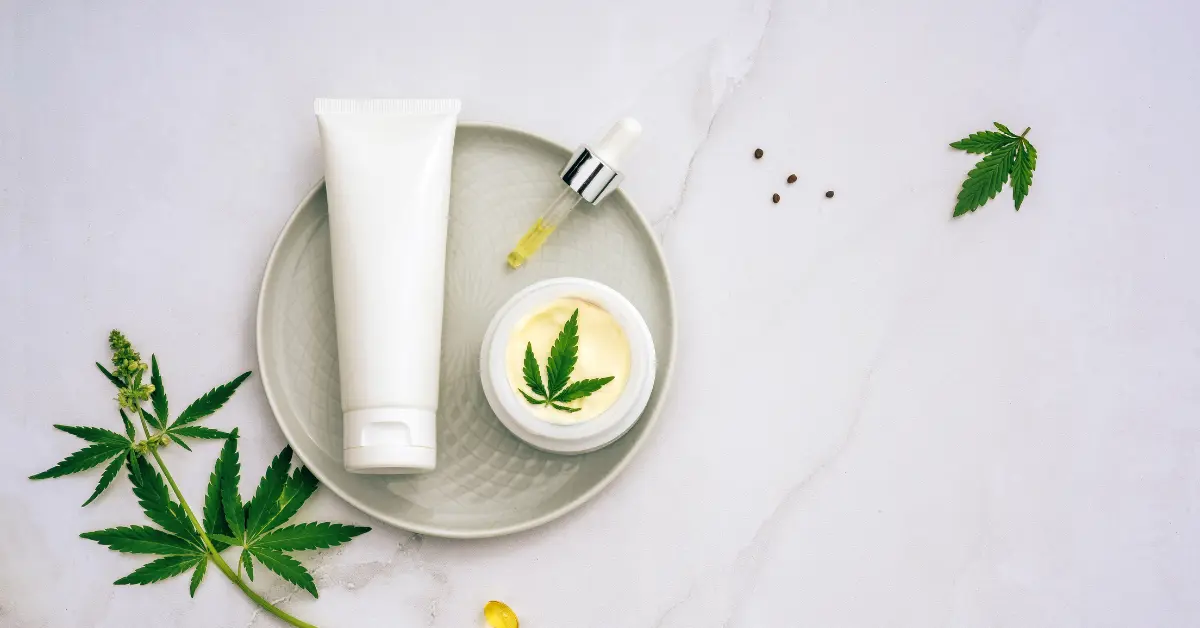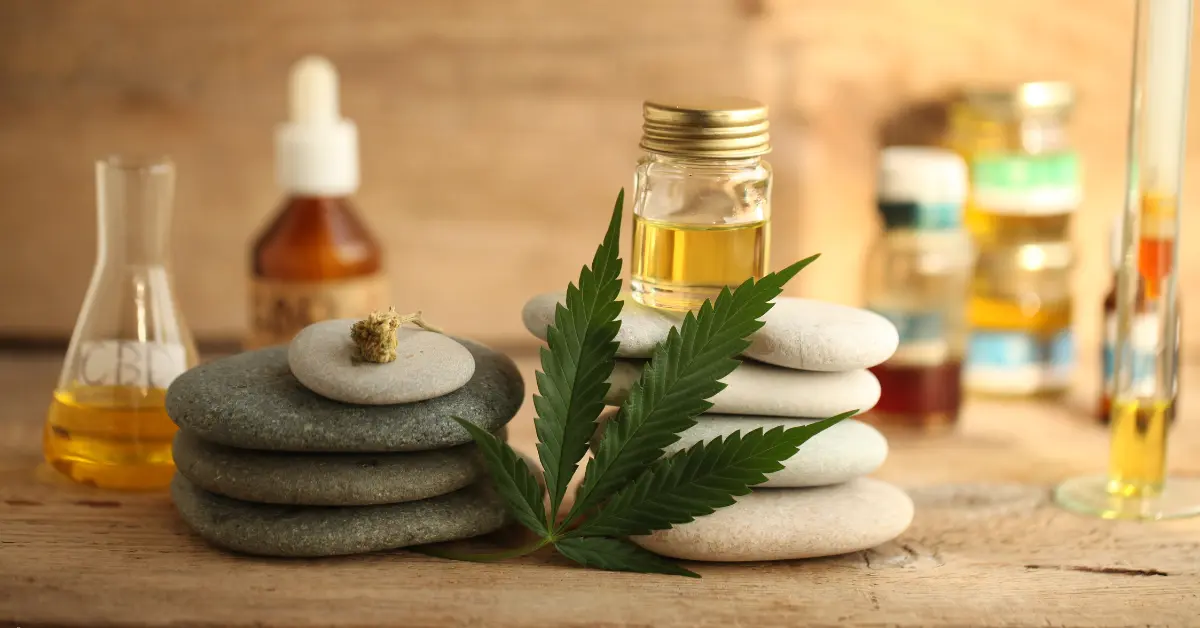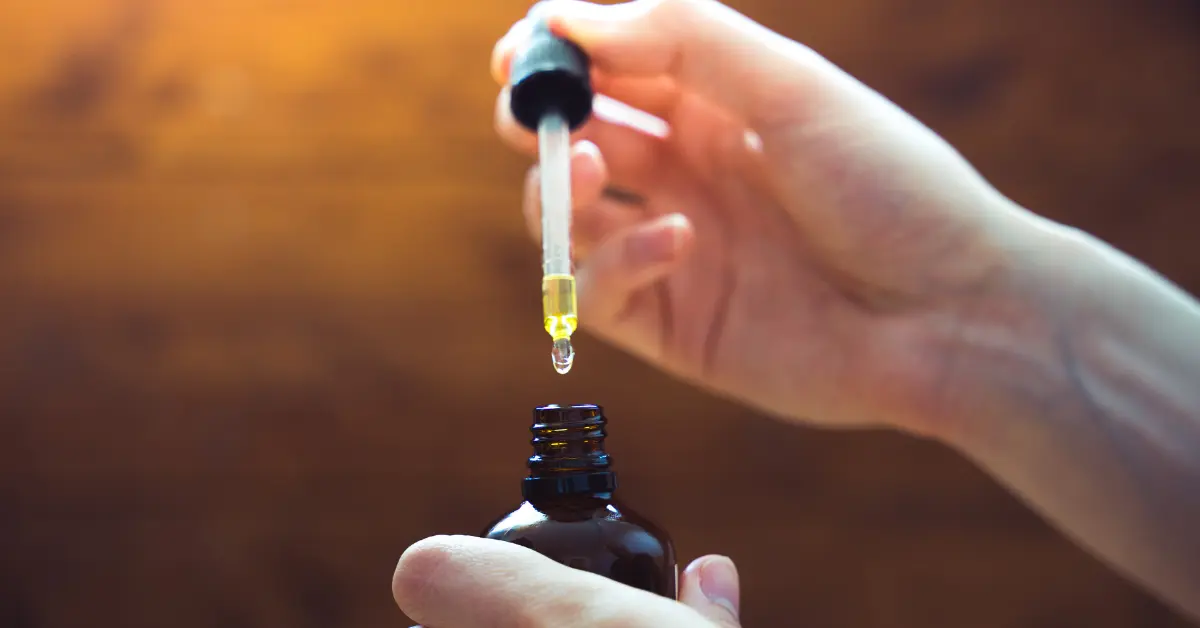Cannabidiol (CBD) has become a popular natural remedy, and interest is growing in how it can be delivered through the skin. Transdermal CBD products offer a unique way to use CBD without ingesting it. In this article, we explore CBD absorption through the skin, its scientific workings, and the potential benefits it may offer. We’ll break down the biology of skin absorption, compare transdermal patches to traditional CBD oil, and discuss the potential benefits for pain relief and skincare.

Understanding How CBD Works in the Body
To appreciate the benefits of transdermal CBD, it is helpful to understand how CBD works once it enters the body. CBD interacts with our endocannabinoid system (ECS), a network of receptors (CB1 and CB2) and biochemical messengers that help regulate pain, inflammation, mood, and other vital functions. Unlike THC, CBD doesn’t bind strongly to cannabinoid receptors; instead, it influences the ECS more indirectly. For example, CBD can increase levels of anandamide, a natural cannabinoid in our bodies associated with pain regulation, which may reduce pain perception and lift mood. It also appears to limit inflammatory signals in the nervous system, which is one reason CBD is being studied for conditions involving inflammation.
This means that when CBD is delivered into the body, it can confer therapeutic effects without the “high” caused by THC. CBD is non-intoxicating, and users generally report feeling relaxed or experiencing reduced discomfort rather than any mind-altering effects. Understanding these properties sets the stage for why delivering CBD through the skin may be beneficial in providing targeted relief.
What Is CBD Skin Absorption?
Human skin is composed of multiple layers, the outermost being the epidermis with a tough layer called the stratum corneum. This outer layer is rich in keratin and oils, forming a protective barrier that keeps out most foreign substances. There are two ways it can work via skin application:
- Topical CBD: A standard CBD lotion, balm, or salve applied to the skin’s surface. Topicals generally act on skin-deep receptors and nearby tissues but do not significantly enter the bloodstream. In other words, they target the area where they’re applied for localized benefits.
- Transdermal CBD: A specially formulated product (often a patch or gel) designed to penetrate through the skin layers and deliver CBD into the bloodstream. This allows CBD to have systemic effects, reaching beyond the application site.
Both involve applying CBD externally, but their goals differ. Topicals provide relief right at the surface or just beneath, whereas transdermal delivery aims to get CBD across the skin barrier for a body-wide effect.
CBD Effects With and Without Bloodstream Entry
The effects of CBD can differ significantly depending on whether it is absorbed into the bloodstream or acts only at the site of application. Systemic absorption allows CBD to potentially affect mood, stress, sleep, and widespread pain or inflammation, providing benefits that extend beyond the application site.
Why Transdermal Delivery? Advantages Over Oral CBD
You might wonder why someone would choose a patch or cream instead of just swallowing CBD oil. The reason lies in how CBD is absorbed and processed in different delivery methods. When taken orally, CBD must pass through the digestive system and liver before reaching the bloodstream. During this journey, a significant amount of CBD is metabolized and lost, a phenomenon known as first-pass metabolism. Oral CBD’s bioavailability is quite low, often estimated at around 6%–19%. This means if you consume a large dose of CBD, only a small fraction might actually have an active effect in your body.
Transdermal delivery can bypass these digestive hurdles. When CBD is absorbed directly through the skin into the bloodstream, it bypasses the gut and liver filtration that occurs with oral products. As a result, a higher proportion of the CBD can remain active. Delivering cannabinoids through the skin can maintain steadier blood levels and prevent significant losses due to gut metabolism. In essence, using the skin as a route of administration can improve the CBD absorption rate into the bloodstream and provide more consistent effects over time. Another advantage is that transdermal CBD tends to cause fewer systemic side effects. Because it provides a slow, steady infusion of CBD, you don’t get the spikes in concentration that you might with inhalation or high-dose oral intake. Also, avoiding the digestive tract means no stomach upset, and it sidesteps any issues with taste or swallowing that oral products can have.
Transdermal vs. Topical: What’s the Difference?
It’s also crucial to distinguish transdermal CBD products from ordinary topical CBD products. As mentioned, both are applied to the skin, but their formulations and effects are not the same. A topical CBD cream is generally intended for localized CBD absorption. These products interact with cannabinoid receptors in the skin and underlying tissues to provide relief in a targeted area. Transdermal CBD products are designed differently. They use technologies and ingredients that enable CBD actually to cross the dermal layers and enter systemic circulation. CBD patch benefits come from delivering the compound into your bloodstream for a whole-body effect, rather than treating only the surface area.
Topical CBD for Pain Relief
One of the most common uses of CBD topicals is for pain relief. Many people use topical CBD for pain relief as an alternative to oral pain medications or to complement other treatments. The idea is simple: apply a CBD-infused cream or salve directly to an area that’s hurting – such as an arthritic joint, a strained muscle, or a sore back- and let CBD work on the underlying inflammation and pain receptors in that area. CBD is known for its anti-inflammatory and analgesic properties. When applied to the skin, it can reach the local endocannabinoid receptors to help dial down pain and swelling. You might rub a CBD balm on your temples for a tension headache or on your neck for muscle tension without any appreciable CBD affecting other parts of your body or making you feel sedated. Many athletes and chronic pain sufferers keep CBD creams on hand as natural pain relief creams, using them similarly to how one might use menthol rubs or arthritis creams, but with the botanical twist of CBD.

For conditions like osteoarthritis, neuropathy, or muscle strains, topical CBD might provide relief by reducing the local inflammatory response and desensitizing pain fibers. It’s not a cure for the underlying condition, but it can improve comfort and mobility in the short term. Many users appreciate that CBD topicals are non-addictive and have few side effects, especially compared to repeated use of NSAIDs or opioid creams. Another aspect is the complementary ingredients often included. The best topical CBD products frequently contain other natural pain-relief boosters like menthol, camphor, arnica, or essential oils. These can provide immediate soothing sensations while the CBD works in the background on deeper inflammation. When choosing a CBD cream for pain, review the ingredient list. A quality product will have a good concentration of CBD and may also include additional ingredients for synergy.
CBD Skincare Solutions and Benefits for Skin Health
Beyond pain, CBD has made a splash in the skincare and dermatology world. There are now CBD skincare solutions designed to help with conditions such as acne, eczema, psoriasis, and overall skin wellness. The skin itself has cannabinoid receptors and is influenced by the endocannabinoid system, which means that applying CBD can directly affect the behavior of skin cells and immune responses in the skin.
One of the most popular areas of CBD skincare is acne treatment. Acne is driven by inflammation and overactive sebaceous (oil) glands. Studies have shown that CBD can help regulate sebum production and has anti-inflammatory effects on the skin, suggesting it could tame acne breakouts. Moreover, CBD’s antibacterial properties might combat the skin bacteria that contribute to acne. Skin hydration and aging are other focuses. CBD is a potent antioxidant, which means it can neutralize free radicals and reduce oxidative stress in the skin – a mechanism that underlies aging and sun damage. By combating oxidative stress, CBD may help protect collagen and elastin fibers in the skin, potentially reducing fine lines and contributing to a more youthful appearance. Additionally, many CBD lotions are formulated with moisturizing ingredients that together improve skin hydration.
Practical Guidance for Using Topical CBD: Product Selection, Application, Storage, and Usage Duration
When considering topical CBD for personal use, it’s essential to approach product selection and daily application with care to maximize both safety and effectiveness. Start by choosing a reputable product—look for brands that provide third-party lab testing to verify the CBD content and purity. Always check the ingredient list for potential allergens or irritants. High-quality products will clearly state the amount of CBD per container or dose, list all ingredients, and avoid unnecessary additives like parabens, phthalates, or artificial fragrances. Opt for products that are free from contaminants and ideally are made with natural, skin-friendly bases. If you have sensitive skin or allergies, consider patch-testing a small amount on your inner arm before using it more widely.
Achieving effective CBD absorption through the skin comes down to a few key factors: product formulation, skin condition, and application method. Here are some tips and insights to maximize absorption:
- Choose Quality Formulations: Not all CBD topicals are created equal. The best topical CBD products are formulated with skin penetration in mind. For transdermal patches or advanced creams, this means they include permeation enhancers. Substances like ethanol, propylene glycol, or specific fatty acids can dramatically increase CBD’s ability to cross the skin.
- Prepare the Skin: How you apply a CBD topical can influence absorption. It helps to apply to warm, clean skin. If possible, wash the area with warm water and mild soap to remove oils or dirt, and pat dry. Warm, healthy skin with good circulation will absorb topical agents more effectively than cold, unclean skin. Gently massaging the product into the skin can also help by increasing blood flow and ensuring even distribution. Be generous with the amount – unlike oral CBD, you don’t have to worry about “too much” in terms of systemic dose, since the skin naturally limits absorption to some extent. A thicker layer of cream or a well-adhered patch ensures there’s plenty of CBD available to soak in.
- Consider Placement (for Patches): If you’re using a transdermal patch, placement matters. You want an area with a strong blood supply and relatively thin skin. Common recommended areas include the inner forearm, inner bicep, shoulder blade area, lower back, or even the thigh. These areas often have capillaries near the surface. Avoid very thick-skinned or bony areas, as they might not absorb as well. Also, avoid placing patches over open wounds or irritated skin. Good contact is critical – ensure the patch is fully adhered and the edges aren’t peeling, to prevent air or water from getting underneath it.
- Be Mindful of Base Ingredients: The base or carrier of the CBD can affect the hemp oil absorption rate and overall penetration. Many CBD topicals use hemp seed oil or coconut oil bases, which are great for moisturizing but are heavy oils that sit on the skin. Lighter oils or alcohol-based gels can penetrate faster. If you find a product isn’t absorbing well, it might not be optimized for absorption. You could opt for formulations like lotions or gels, which tend to soak in more readily than waxy salves. On the other hand, thick balms can be good for very localized issues, since they stay and slowly release CBD to that specific spot. Knowing your use case can guide you: use faster-absorbing forms for quick action and wider spread, and slower-absorbing forms for long-term moisture and barrier protection.
- Consistency and Timing: With any CBD topical, consistency is key. If you’re addressing a chronic issue, regular application can build up CBD in the local tissues or ensure constant receptor engagement. Transdermal patch users might rotate a new patch every day or two, as directed. Also consider timing: if using for exercise-related pain, apply before a workout to get the anti-inflammatory benefits during and after. For sleep support with a patch, apply an hour or two before bedtime so it has time to start absorbing.
By following these practices, you’ll improve the likelihood of reaping the full benefits of your CBD topical or patch. Give it some time and careful observation to judge its impact.

Safety and Side Effects of Topical CBD
CBD applied to the skin is generally very safe. Since it doesn’t enter the bloodstream in large quantities, it largely avoids systemic side effects. CBD is non-psychoactive, so even a transdermal patch with a high dose is not going to cause impairment. This makes CBD topicals an attractive option for people who want therapeutic effects with virtually no risk of intoxication.
If you’re looking to buy CBD patches or a quality CBD cream, do a bit of homework on the brand’s reputation and product testing. Partnered Process is one company known for providing lab-tested hemp CBD products, ensuring you get what’s advertised in terms of potency and purity. Starting with a trustworthy product will give you the best chance of success. From there, it’s about finding the right application method and routine that works for your needs. With the science of transdermal CBD absorption on your side, you have a powerful tool for natural relief and wellness that works in harmony with your body’s own systems.
Sources
- medicalnewstoday.comMedical News Today – CBD oil for pain management: Effects, benefits, and uses (explaining how CBD increases anandamide and reduces inflammation)
- pubmed.ncbi.nlm.nih.govPubMed – Transdermal cannabidiol reduces inflammation and pain-related behaviours in a rat model of arthritis (noting CBD’s poor oral bioavailability and advantage of topical application)
- jcadonline.comJ. Clin. Aesthet. Dermatol. – Safety and Sourcing of Topical Cannabinoids (clarifying that transdermal delivery is designed to penetrate the skin for systemic absorption, unlike regular topicals)




